I go through quite a bit of film these days, primarily black and white 35mm and 120. I became interested in loading bulk film onto reloadable 35mm film cassettes. There was an economical argument, but I also was intrigued by the control of the process of loading film onto the spool and learning that part of film photography.
I’d like to share some of my experiences and perspective with loading bulk film. And to spoil the answer to the question: is it worth it? It depends. But for me, it has been worth it.
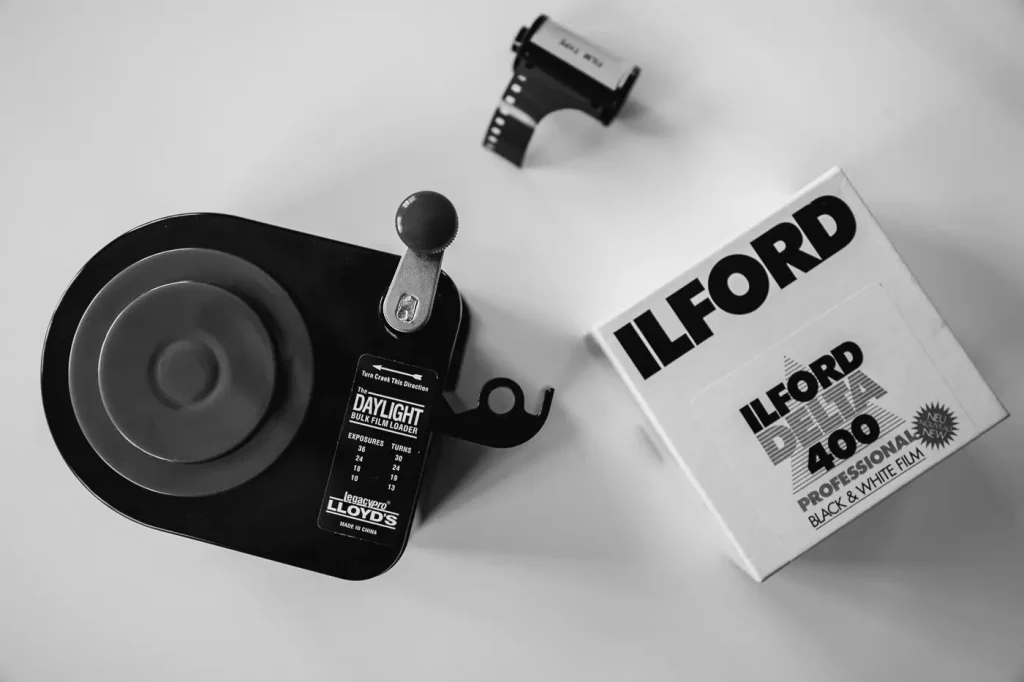
Since this is a somewhat dry topic, I thought I’d include some pictures shot with some of my bulk loaded film (Ultrafine Xtreme 400 and Ilford Delta 400), many shot with the Nikon FE I recently reviewed at 35mmc.com. I also include a brief process on how I bulk load film currently with a pictoral sequence below.
All film photographs shared here were developed in HC-110 Dilution B (1:31) except the last two (in Ilford DD-X); the negatives were scanned with a DSLR (Nikon D850, 105mm Macro lens), and converted in Lightroom using Negative Lab Pro 2 / 2.1). The bulk loading process photographs were shot with a Leica Q (28 mm lens) and converted in Lightroom to B&W.
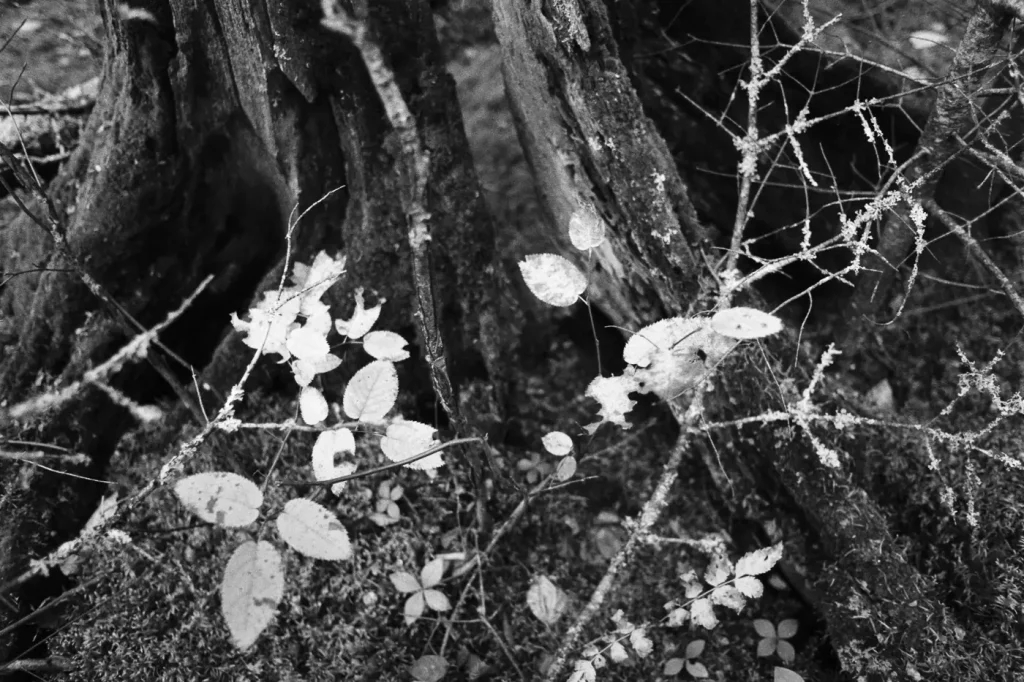
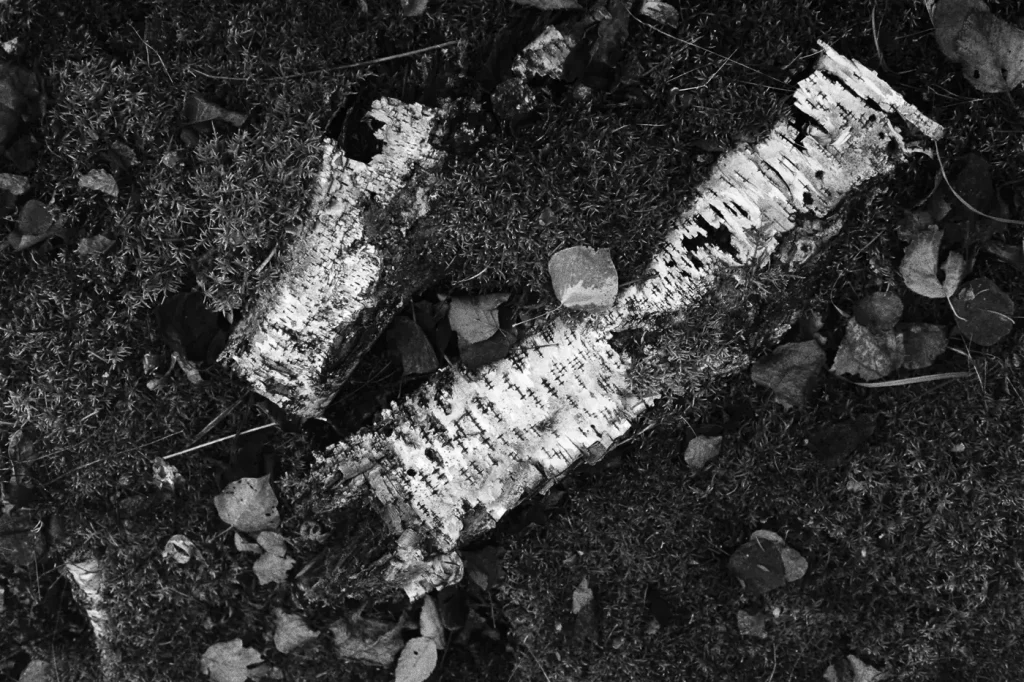
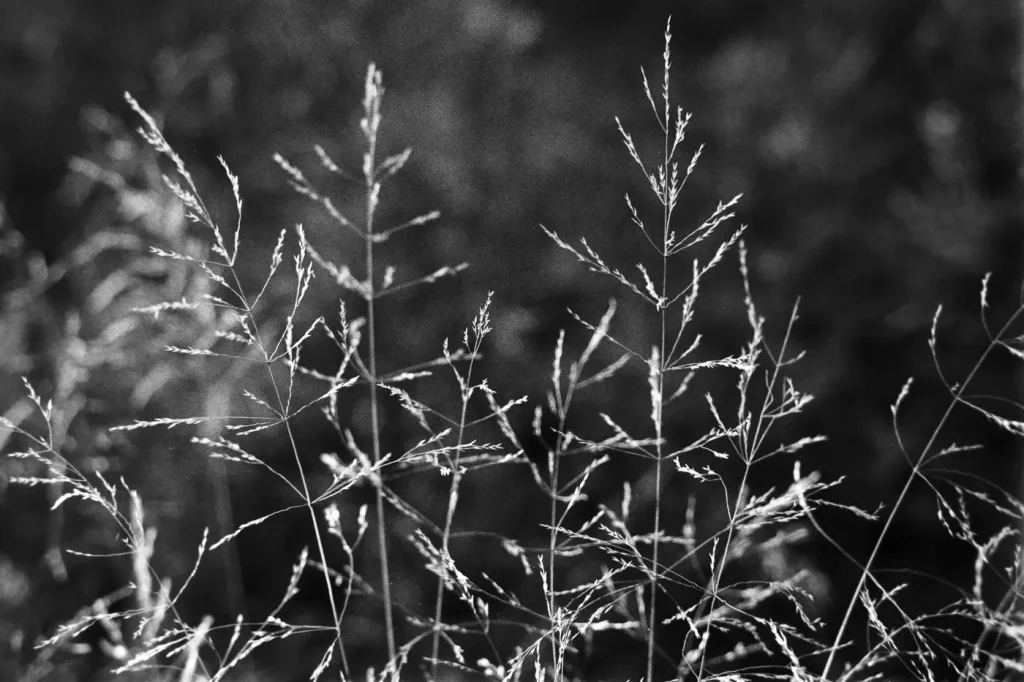
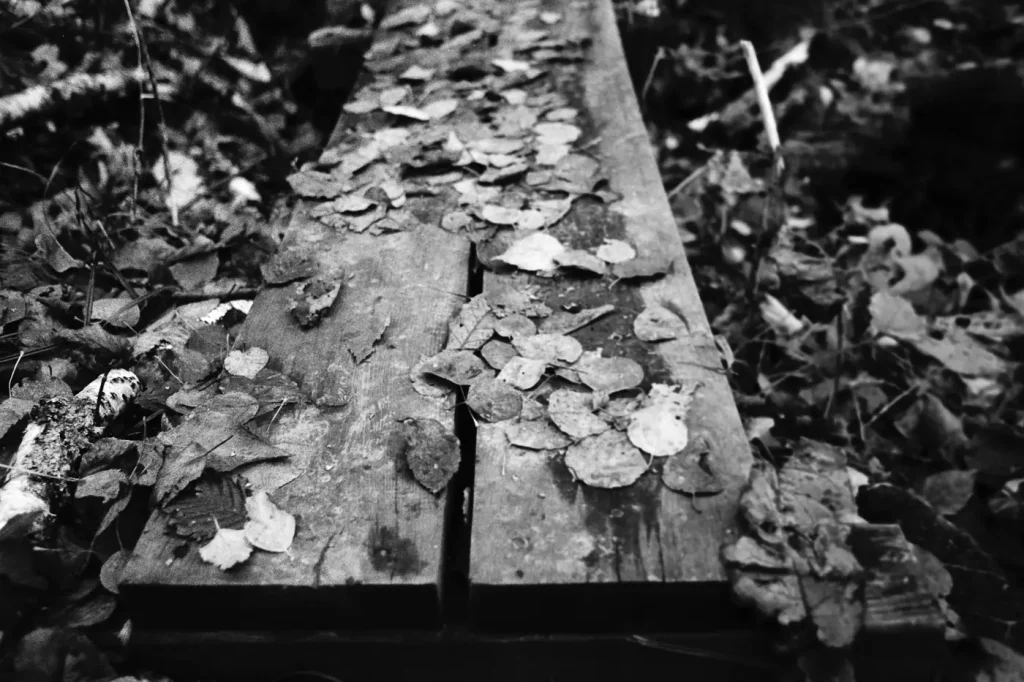
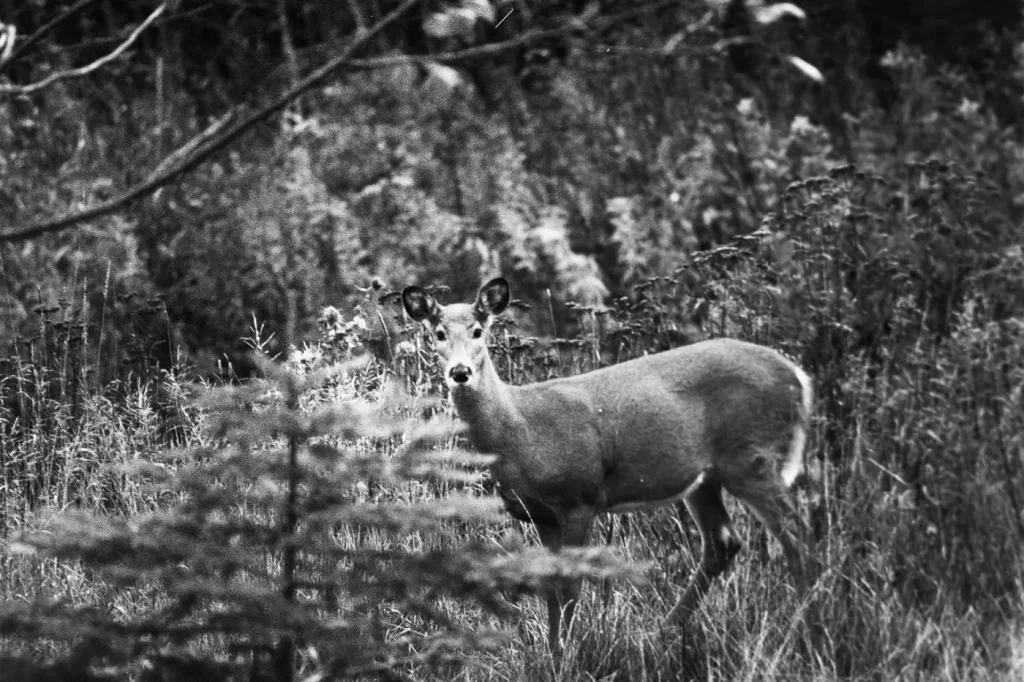
35mm bulk film seems to be typically available in 30.5m / 100 foot rolls and requires the user to load the film onto (often) reloadable 35mm film cassettes. While there are many different ways of doing this process including doing this in the darkroom, I wanted to focus on using a daylight loader (in my case the Lloyd brand).
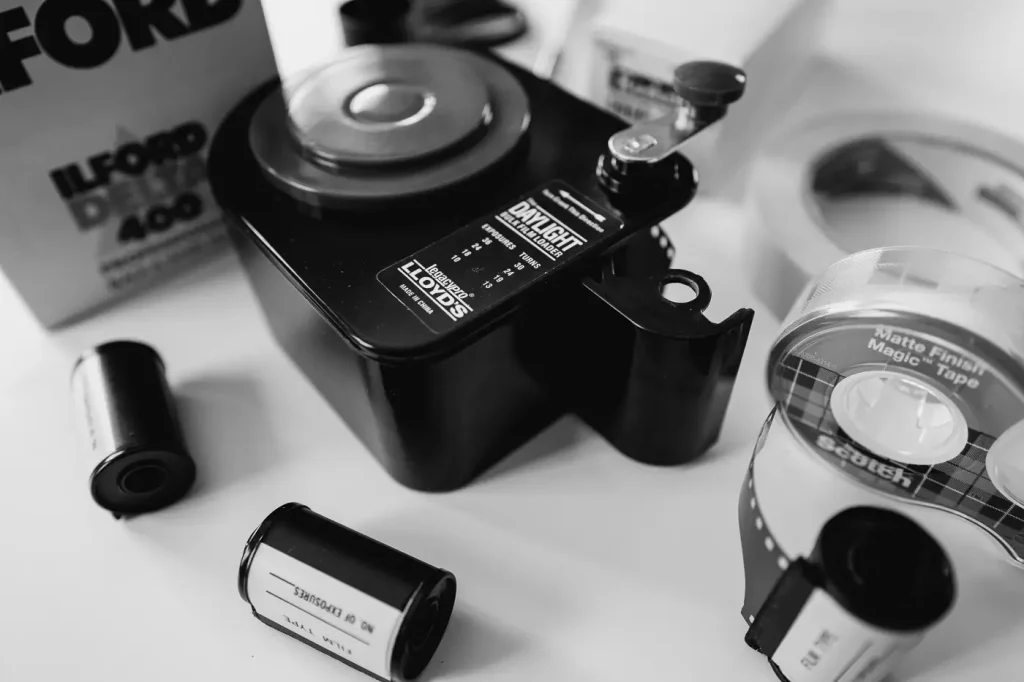
Is bulk film worth it economically?
A roll of 30.5m / 100 ft bulk film can produce 18 rolls of 36 exp rolls. Per calculations below, across the board 18 rolls of 36 exp bulk film is cheaper than 18 rolls of commercial individually packed 36 exp film. The cost per roll for bulk film has been calculated as cost of bulk film divided by 18.
I included cost (and potential savings) in the table below for some of the more popular ASA 400 black and white films available in bulk in the US. The prices are based in US-$, and came from B&H’s website as of December 4, 2019. (There was just a news release that Kodak will increase all their prices in January 2020, so it is likely that the Kodak will change in 2020!)
As can ben seen below, the potential savings per either 18 rolls or individual roll or % vary quite a bit. I was actually surprised how little bulk TriX and Tmax 400 film in particular were discounted (18% and 9% respectively). This is something to keep in mind for those who plan to shoot primarily those film stocks. The table is not not comprehensive, and prices are subject to change and also likely different in different geographies across the globe.
Table 1: Cost of individual rolls and potential savings using bulk film

Note: savings calculations do not include amortization of expenses required for bulk loader, cassettes, and other supplies.
Note 2: The assumption was that a 30.5 m bulk roll will result in 18 film cassettes with 36 exposures each.
These calculations do not take into account the expenses needed for bulk loader itself which can range from $20 dollars (used) to $50 (Lloyd, new) around $100 dollars (Bobinquick, new). As well as the cost for the reloadable cassettes.
The cost of cassettes is also quite variable: $1-2 per cassette (ultrafineonline.com) to $20 and more per cassette for really high quality Leica (used) cassettes that likely last for a long time. Yes, one can also get free cassettes from a local photo lab although those have not been designed to be “reloadable”. I believe that some of the Ilford films are easier to recap/reuse, but again, have not experimented with that, and prefer specifically designed reloadable cassettes.
These additional expenses can be amortized over time. So let’s say, you plan to bulk load Tmax 400 film. And let’s assume you spend $50 on a used bulk loader including some cassettes. (I am aware that I did not factor in costs for Scotch tape, masking tape, scissors, sharpie and dark bag. I assume you already have a dark bag or access to a dark room if you are venturing into bulk film loading!).
You would start saving money during the sixth 100 foot rolls (that’s 6 x 18 rolls of 36 exp film or 108 rolls!). This is an extreme case as the Tmax 400 bulk roll is not much discounted by Kodak (this ratio might change in 2020 when the prices increase). With Ilford Delta 400 (linking recent 35mm article), you will start saving money on the 2nd bulk roll.
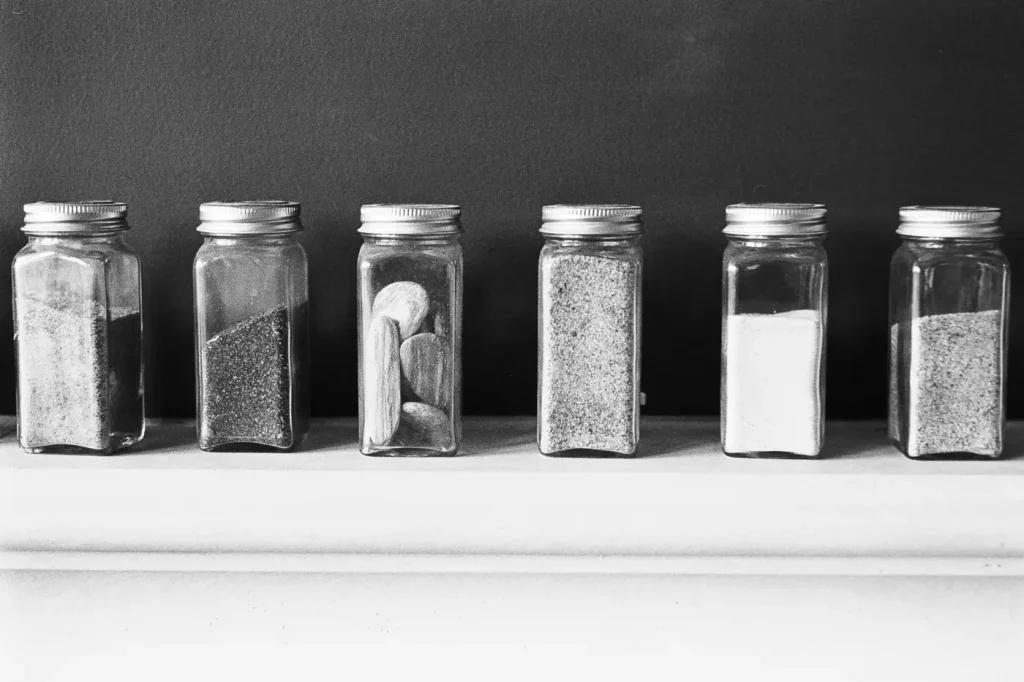
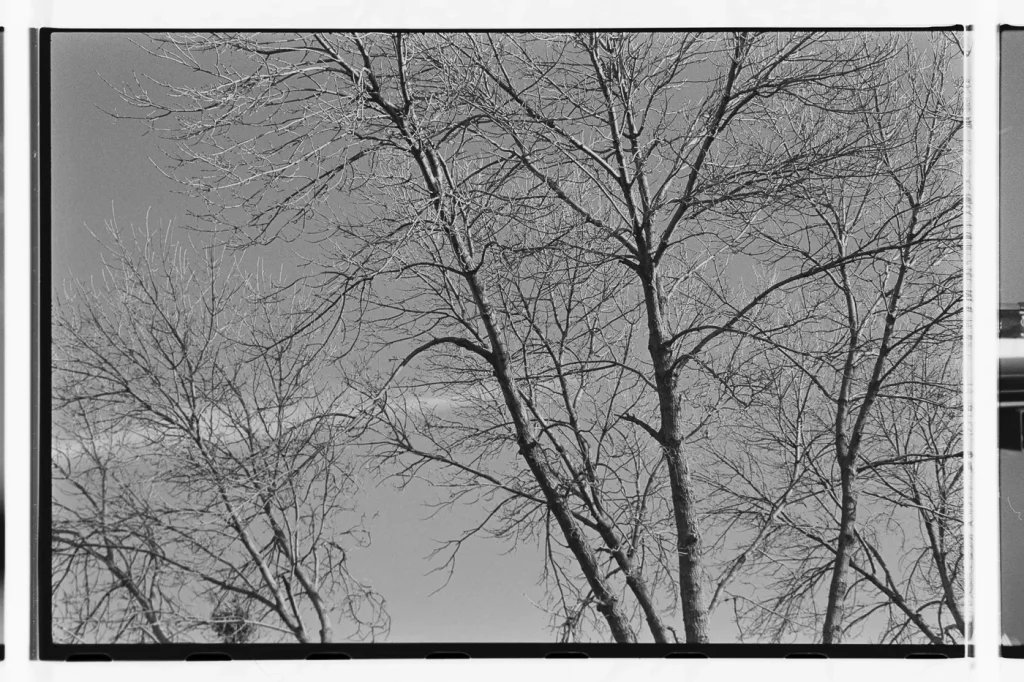
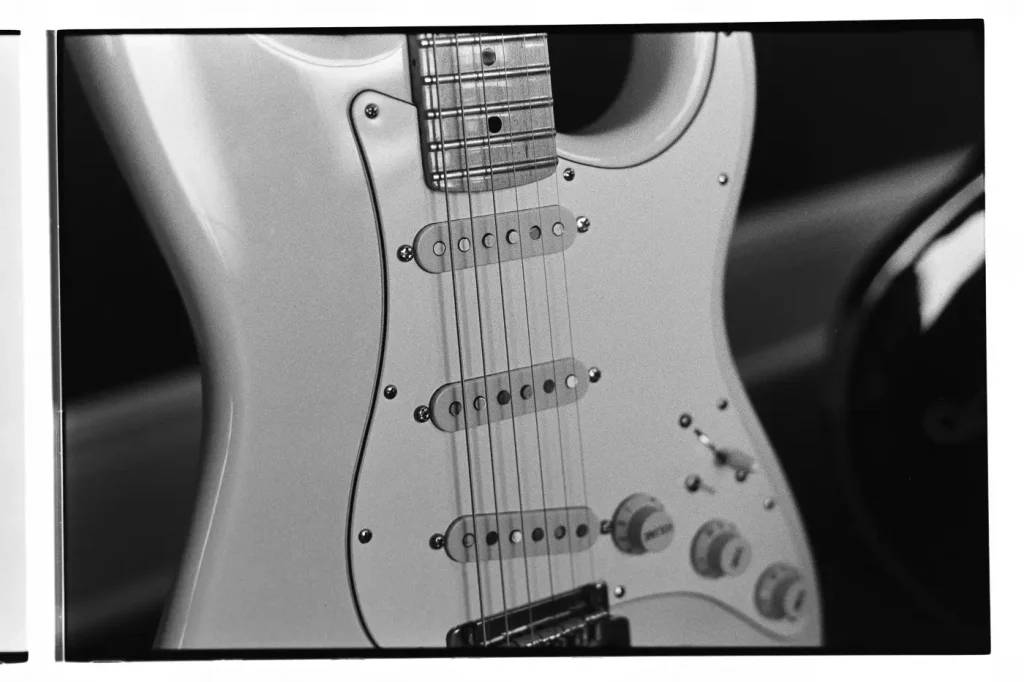

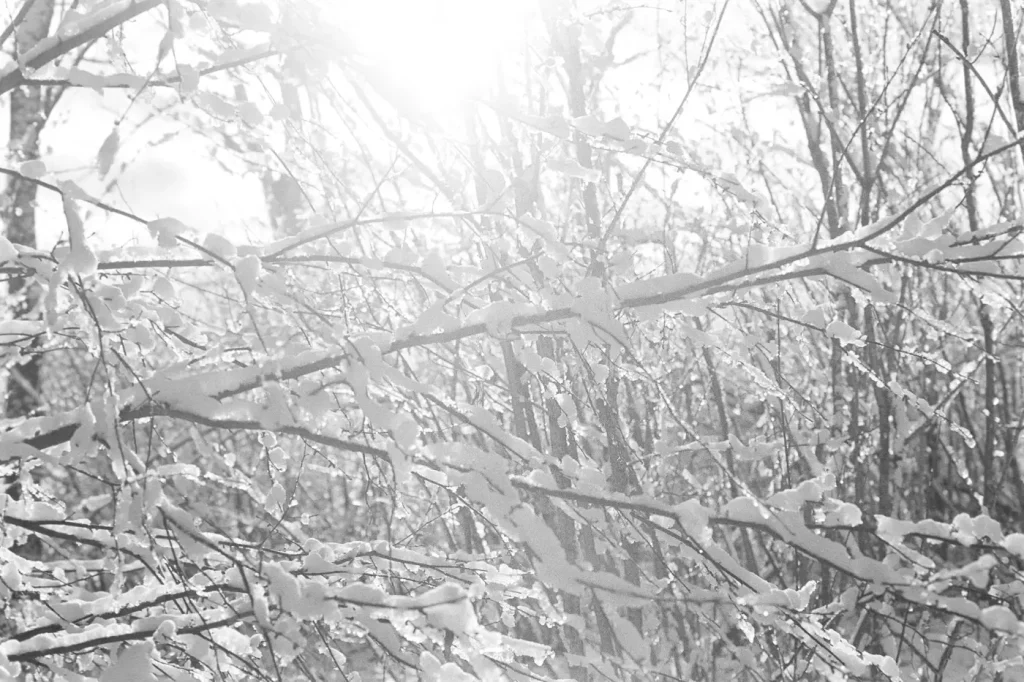
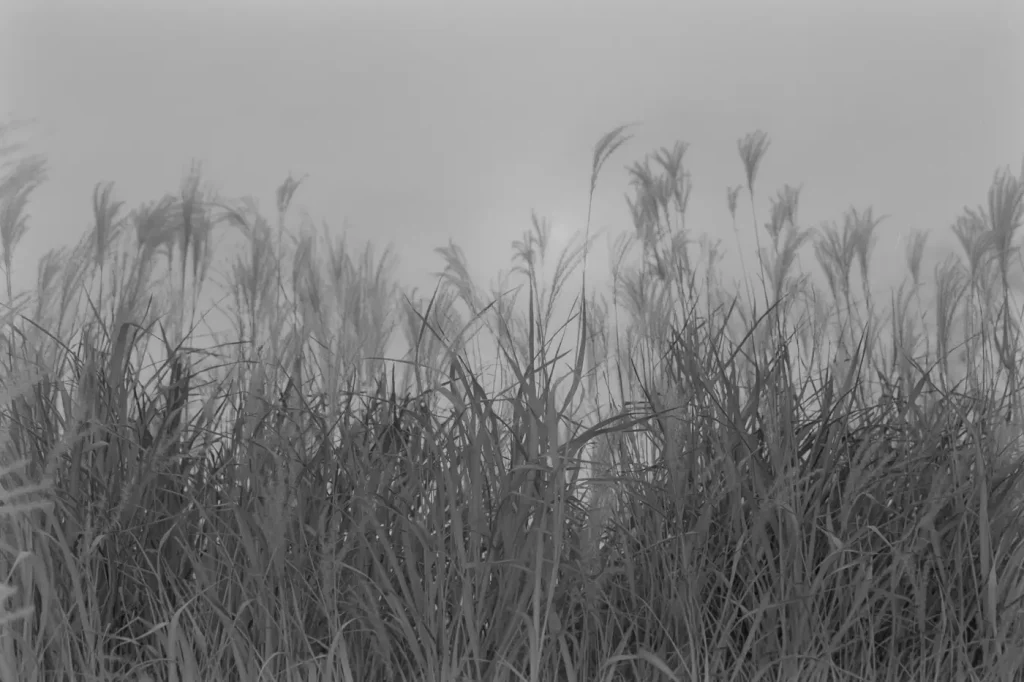
I decided to start my “bulk film loading journey” with a Lloyd bulk loader (this daylight loader is said to waste less film than others, and is very easy to use), a 100 foot roll of Ultrafine Xtreme 400 B&W film and 10 reloadable cassettes, available as a kit from Photo Warehouse / ultrafineonline.com for a little under $100 US-$.
So, I think the answer to this question is: yes, it is worth it economically, if you are shooting enough to amortize the initial expenses of the additional gear needed (and if you are willing to deal with the potential short comings).
To discuss if it is worth it otherwise, it makes sense to discuss the potential shortcomings, and also advantages of bulk loading.
Potential Shortcomings of working with bulk film
It takes a little time to load your film, but after a little practice, this process is actually very fast, and also very easy. So I consider this a minor disadvantage. I actually enjoy it, similar to developing my film.
Light Leaks and Scratching
There is a potential risk of light leaks and scratching of your film if using velvet-lip film cassettes (the most commonly used type of cassettes for bulk-loading and commercial 35 mm film). This risk is largely eliminated with commercial film cassettes and avoiding bulk loading altogether. But if you are bulk film loading, there are a few tips that might help mitigate that potential risk:
1) Use dedicated reloadable bulk film cansisters. I started using Kodak Snap Caps and heard very positive things about those (they can still be found on eBay as new old stock and possibly in local photo shops occasionally [National Camera Exchange, Minnesota]).
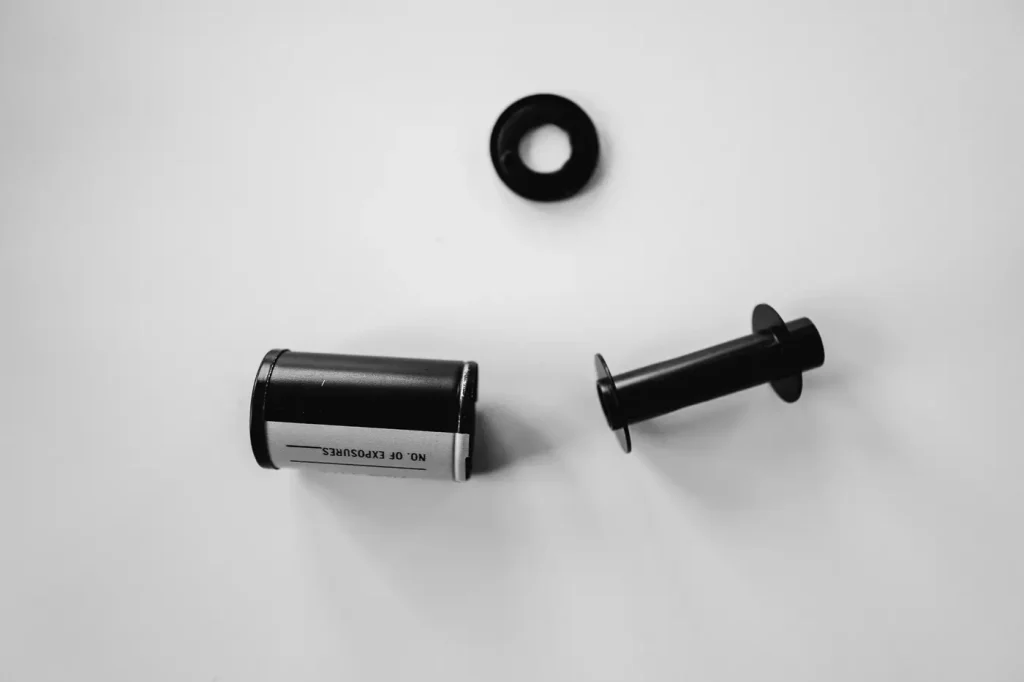
2) Put the loaded film cassettes in a capped plastic (or metal) canisters to avoid dirt/debris in the felt and subsequent scratching.
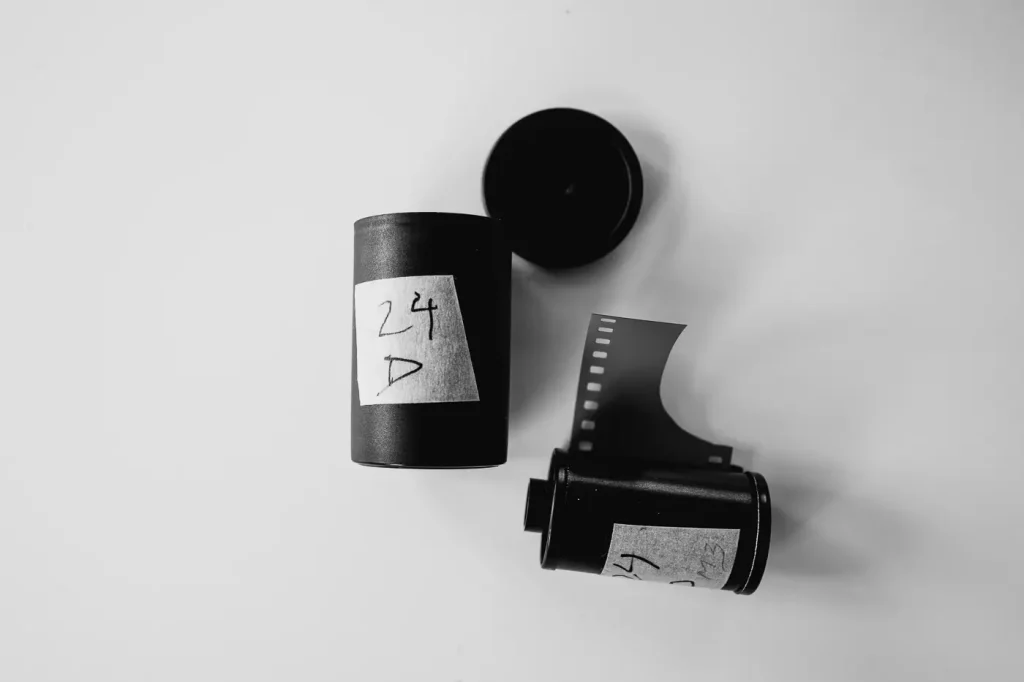
3) Consider cleaning your film canisters before loading with compressed air (again to minimize debris and scratching).
4) Minimize the reuse of canisters. I don’t think there is a hard number on how many times those canisters can be reused. I read anywhere from 7-20 times.
5) Consider using the labyrinthine reloadable cassettes such as the ones from Leica or Shirley Wellard. Those cassettes are vintage, hard to find, expensive ($20 and up / cassette, used), and they do not work with all film cameras, so I can only indirectly recommend this as I haven’t personally tried it.
6) Consider using one-time used film cassettes from a local lab that has a tongue of film sticking out. The idea is that such a cassette is unlikely to cause scratching or light leaks. They would then tape the end of the film from the bulk loader on to that and wind in from there. This approach may work well, but I heard that there can be issues not being able to rewind the film back into the cassette. Curious as to your thoughts on this methods, I haven’t used it.
I had one issue of light leak in one of my first rolls (it was only 2 frames, see one of the pictures above), and it might have been user error (it happened in my 6th roll of bulk rolled film). The rest of the roll was perfectly fine. I have since then been phasing out the cassettes provided by ultrafineonline.com and replaced them with the Kodak Snap Caps reloadable cassettes. Those are also velvet-lip cassettes, and have been manufactured by Kodak specifically as reloadable cassettes.
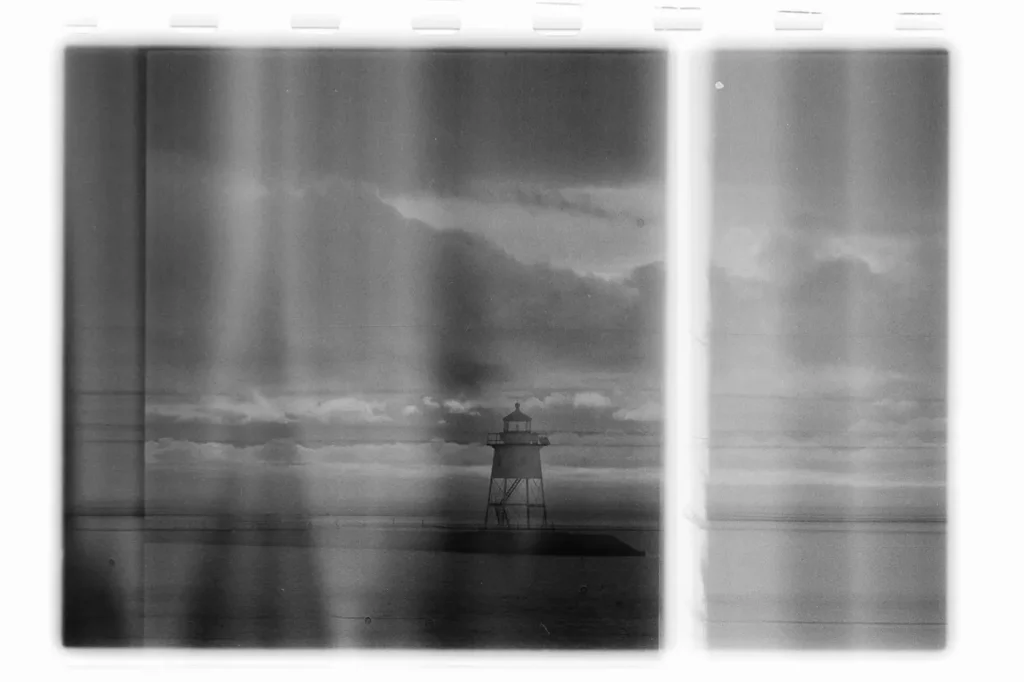
Film pulling off film spool
Another potential risk of loading film from bulk is film pulling off the film spool. I have never had this issue and am using simple Scotch tape with zero problems thus far. The tape is also very easy to remove from the spool. Other options are to use film spools with a feed through mechanism, but this seems to take more time (more precise cutting of leader required and possibly more loss of film due to cutting); I have not personally explored that option.
No DX code
Obviously these reloadable generic film cassettes do not have a DX code, unless you buy DX code stickers or buy DX coded reloadable cassettes (available for DX100 and 400 from ultrafineonline.com, again). This is not an issue for me as I tend to manually set my ISO/ASA and most of my film cameras do not have a DX reader.
Last shot(s) exposed
The last shot(s) of a roll will likely be light exposed (ruined). Since you are loading the last shot(s) of the roll with your daylight loader (the taping onto the spool process), depending on technique and model, you will have that last shot or last shots exposed. This is something I noticed in my bulk loaded films. It is a well-known issue. A partial remedy for that is to tape your film to the cassette with minimal light exposure and then move everything into your dark bag and minimize the unexposed film advancement from the big spool until then. Thus you should be less likely to lose the last 1 to 2 frames.
This is perhaps not a shortcoming. But I think it may make more sense to bulk load your film if you tend to shoot with 1 or maybe 2 favorite films. If you like to use a broad range of different films, it may become less economical, i.e. it may take longer to amortize multiple bulk film loaders and films. A compromise for me has been to bulk load one film at a time (and use that film primarily), and then to purchase small lots of other regular individually packaged film.
Advantages of bulk loading film
Economics
As mentioned above, if you shoot a lot of film, there is, over time, an economical argument to be made in that bulk film may be cheaper. But this is not true for all films! For example, the savings for Kodak Tmax 400 are only $9 / 18 films (52 cents per 36 exp roll), so it would take you quite a while to amortize the cost of a bulk loader and cassettes. So, it may be worthwhile to look closely at your favorite film(s) and to calculate if bulk loading makes economical sense. And even if you are buying into the economical advantages, you would have to answer the question whether those advantages outweigh a potential failure such as major light leaks, scratches or film pulling off film spool for you.
Custom film length
A major advantage I love is that I can customize how many exposures I want per roll. I personally prefer 24 exposures (or less) much over 36. For example, I recently loaded several 10 exposure rolls for testing some different development methods under controlled conditions (bracketing a high contrast/multi-tonality scene, and using different developers for Ilford Delta 400 (HC-110 versus Ilford DD-X). For those types of experiments, those 10 exposure bulk loaded film rolls were ideal.
Fun
Bulk loading is fun! And it also helped me to learn more about film, including how to handle it. The same is true for developing film (which I do as well). So to me it is part of a full end-to-end control and understanding of the process.
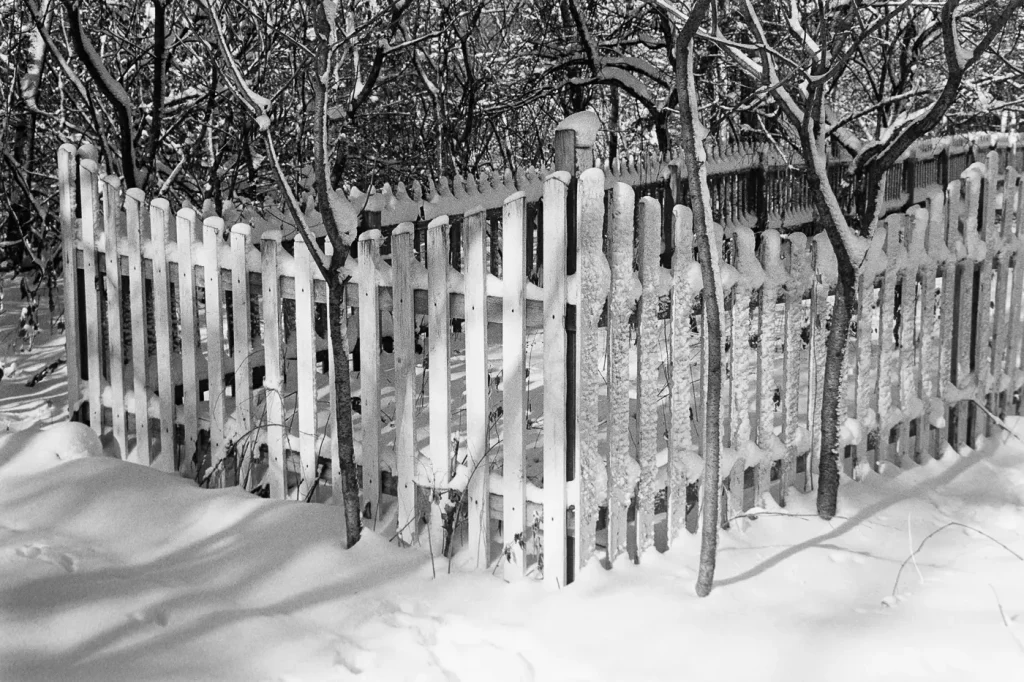
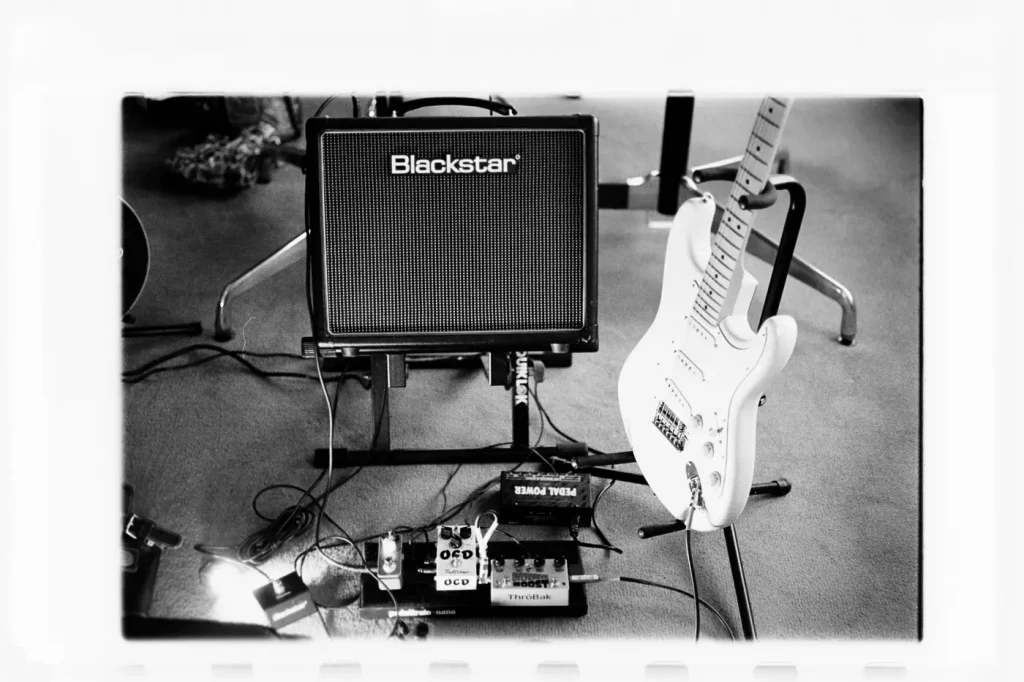
My current process for bulk film loading
As mentioned above, I started out my bulk loading venture with a 100 foot roll of Ultrafine Xtreme 400, a Lloyd bulk loader and velvet-lip reloadable cassettes, all from Photo Warehouse (aka UltraFineOnLine), a US company located in Oxnard, California.
I am briefly describing my process below, but thought I’d share a youtube video by Ed Verosky … he is a great photographer with an under-appreciated but high quality youtube channel. I recommend checking out his other film related videos.
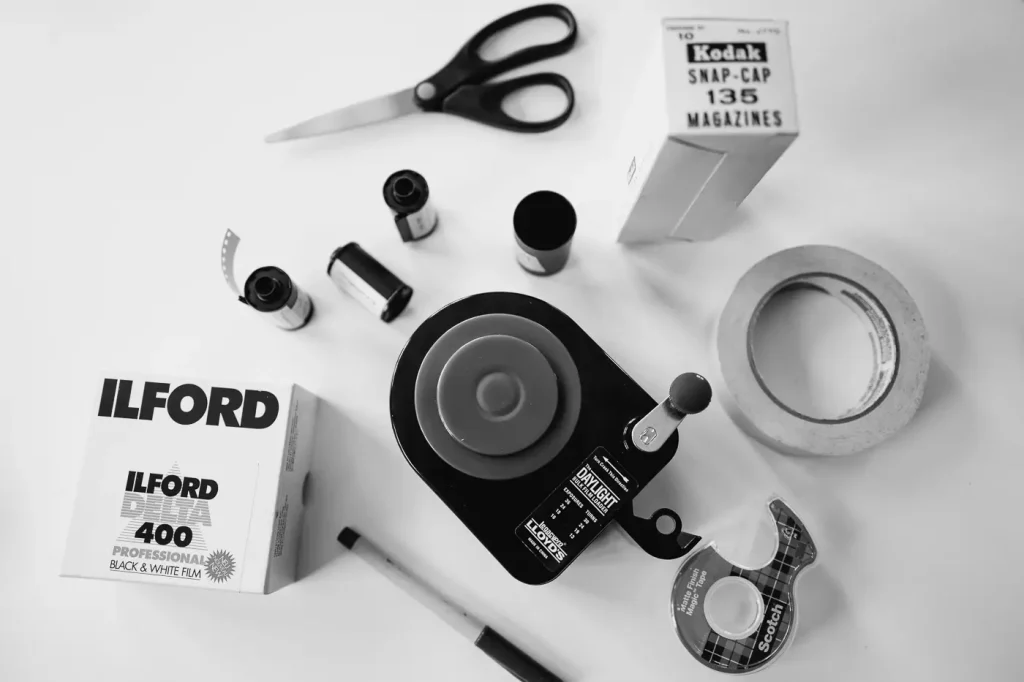
Loading the day light loader (Lloyd)
This process has to be done in complete darkness. In theory, this is relatively simple, but I recommend to watch some youtube videos on how to load the loader, and practice with a disposable film strip. Fortunately, Ed Verosky shows this process to us in daylight using the Lloyd bulk loader (see Ed’s you tube video). Each one of those loaders are different, so you will have to review the instructions from each manufacturer and I suggest to practice this technique in day light before either going in the dark room or using the dark bag.
Loading the individual film cassette
I use Kodak Snap Cap cassettes and simple Scotch Tape to attach the leader of the bulk film to the roll; I try to minimize the amount of exposure of the leader to reduce the amount of ruined final shots.
After attaching the film to the spool, I then push the cassette over the spool and make sure the end cap snaps on tight, while again trying to avoid to pull out too much film out to minimize light exposure of the film.
Then the leader is pushed back into the loader, the loader latch is closed, and in the case of Lloyds, the crank attached. The Lloyd loader does not have a counter, but the number of crank turns are indicated on the loader.
I turn the crank the desired number of times, then remove the crank and open the latch, and pull the film out about 3 inches or so and cut it as shown here.
Then I label the film cassette with masking tape and also label film canister and put the film roll into the canister and into either a drawer or my camera bag or it goes directly in one of my cameras. And voila, the film is ready.
Here a quick pictorial sequence of the film cassette loading process with a Lloyd bulk film loader
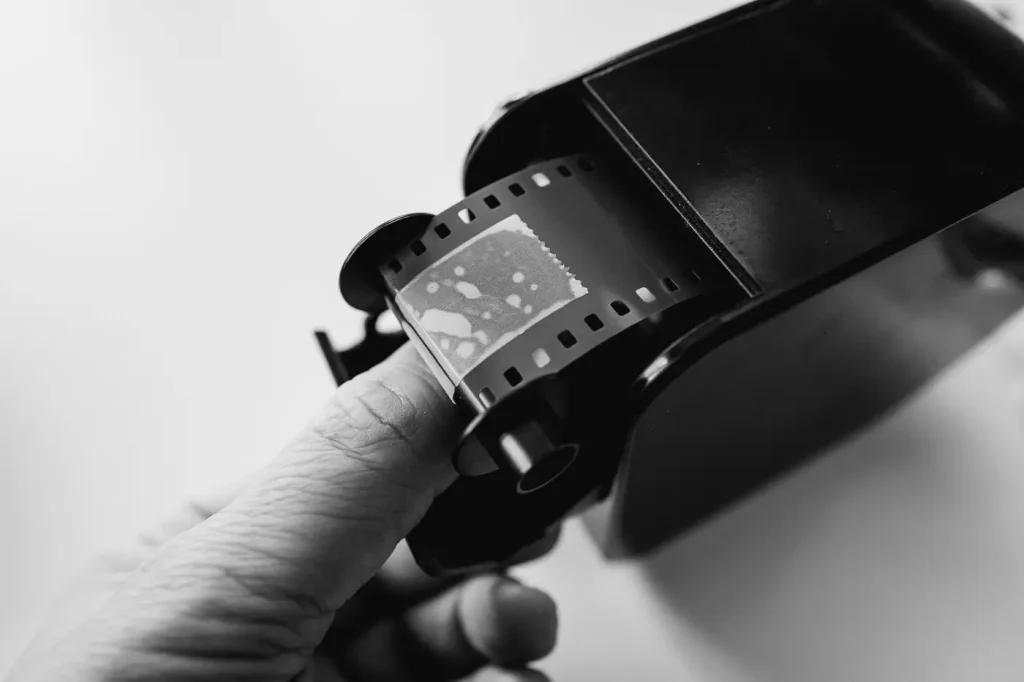
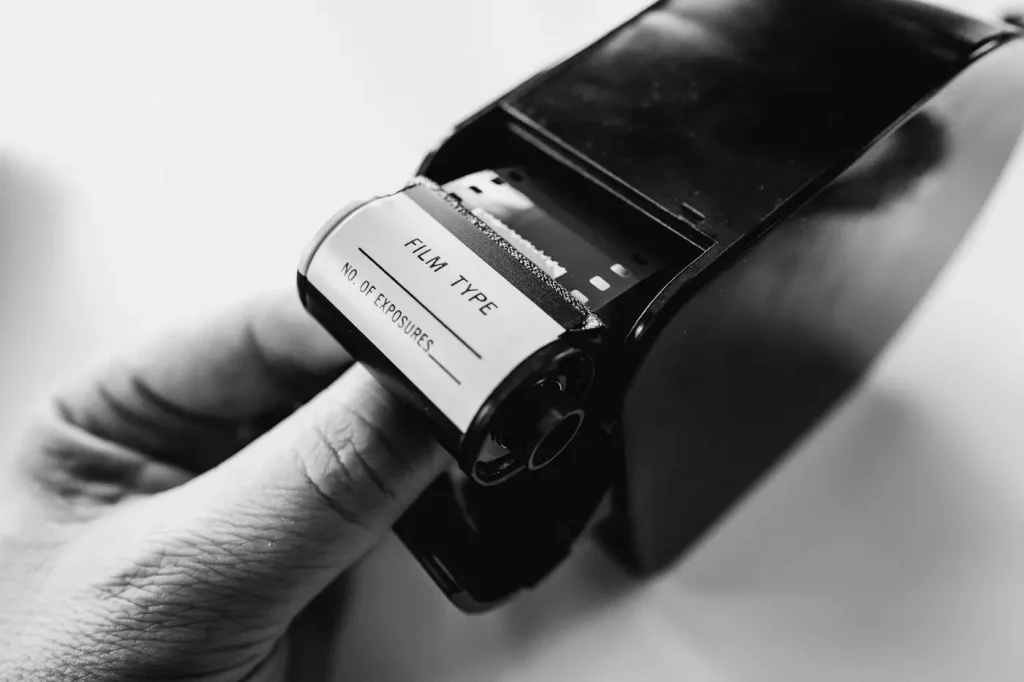
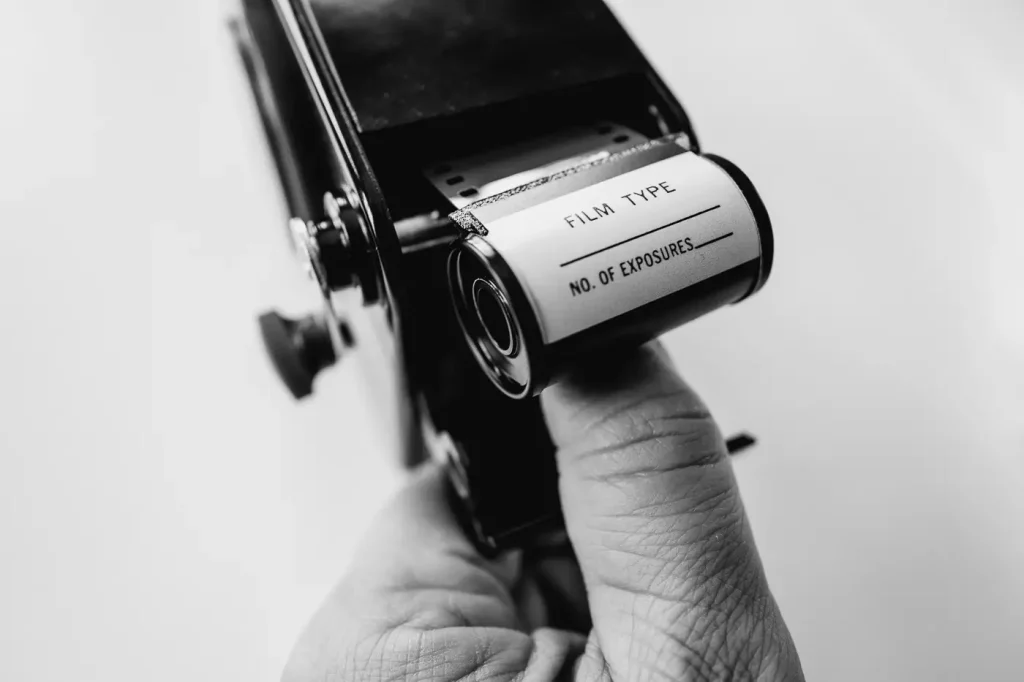
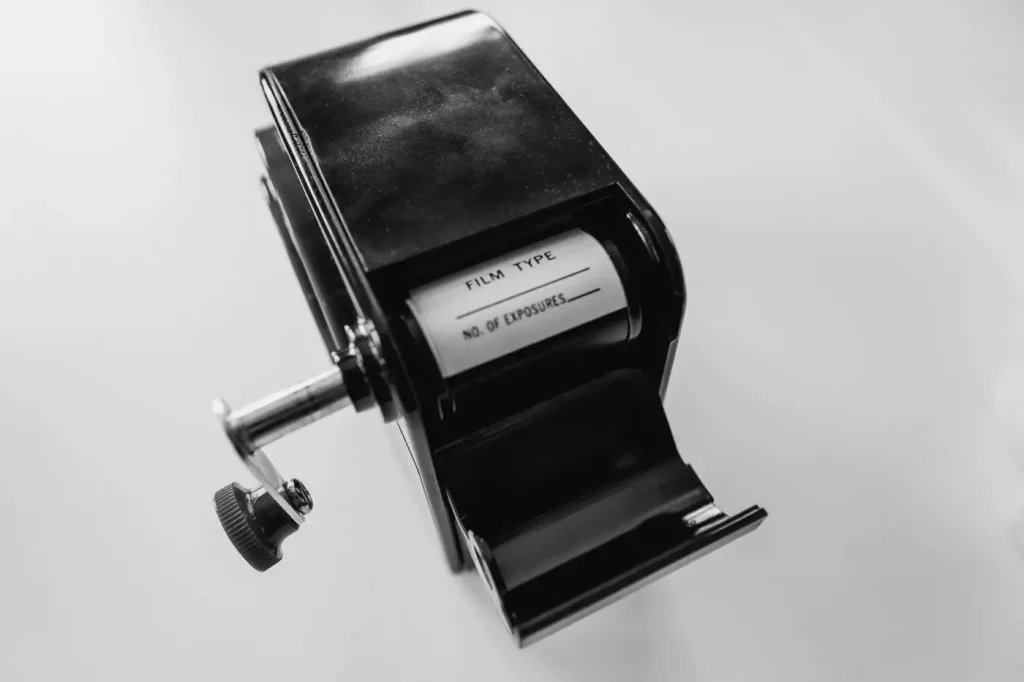
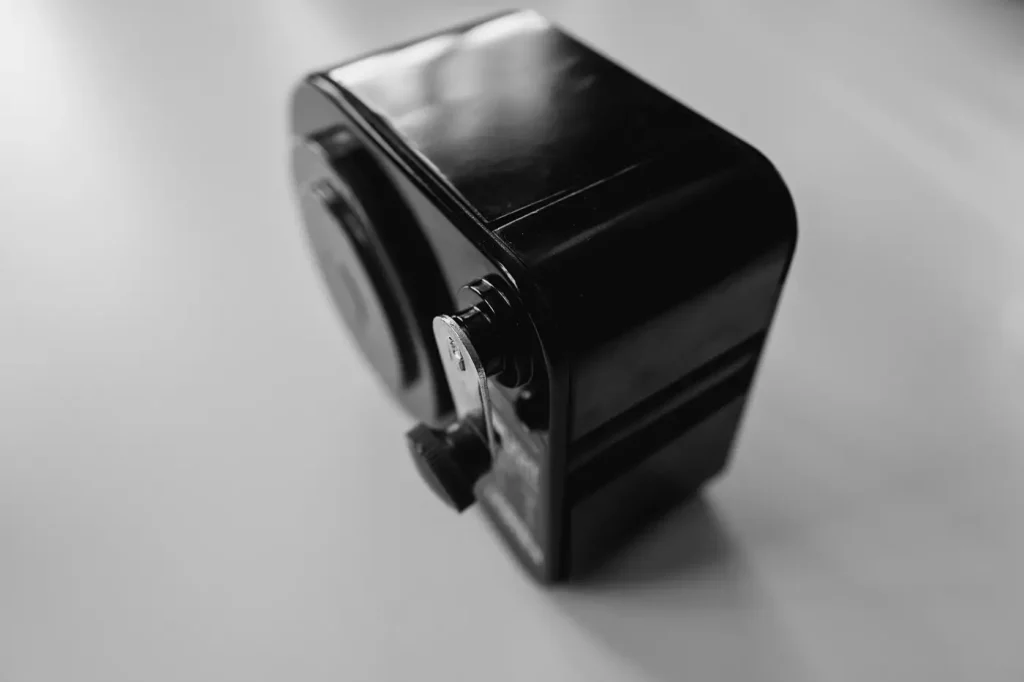
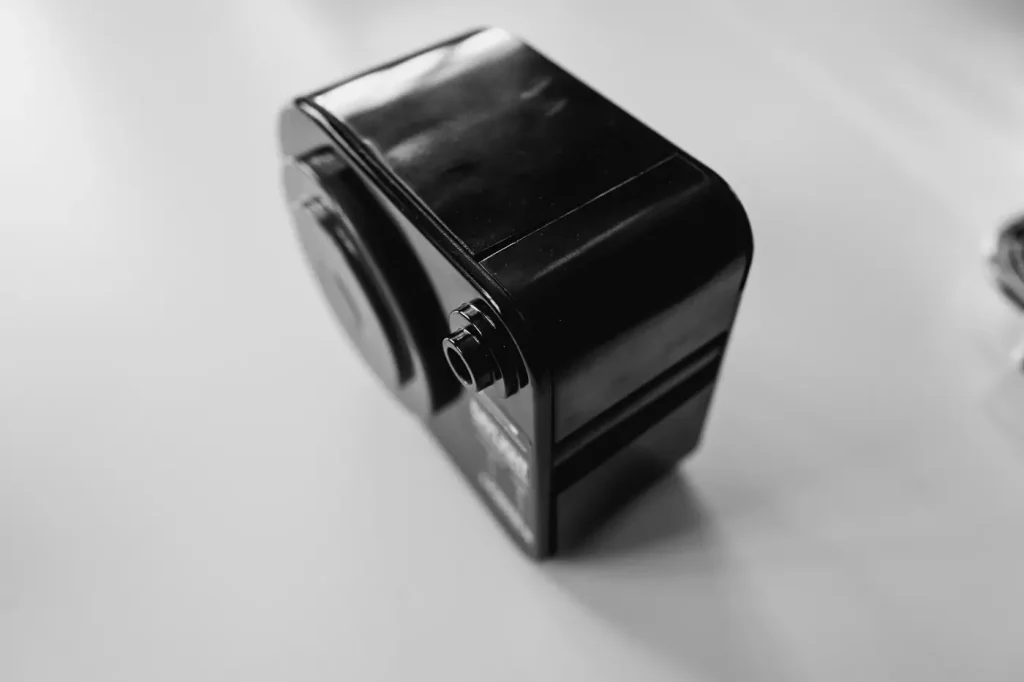
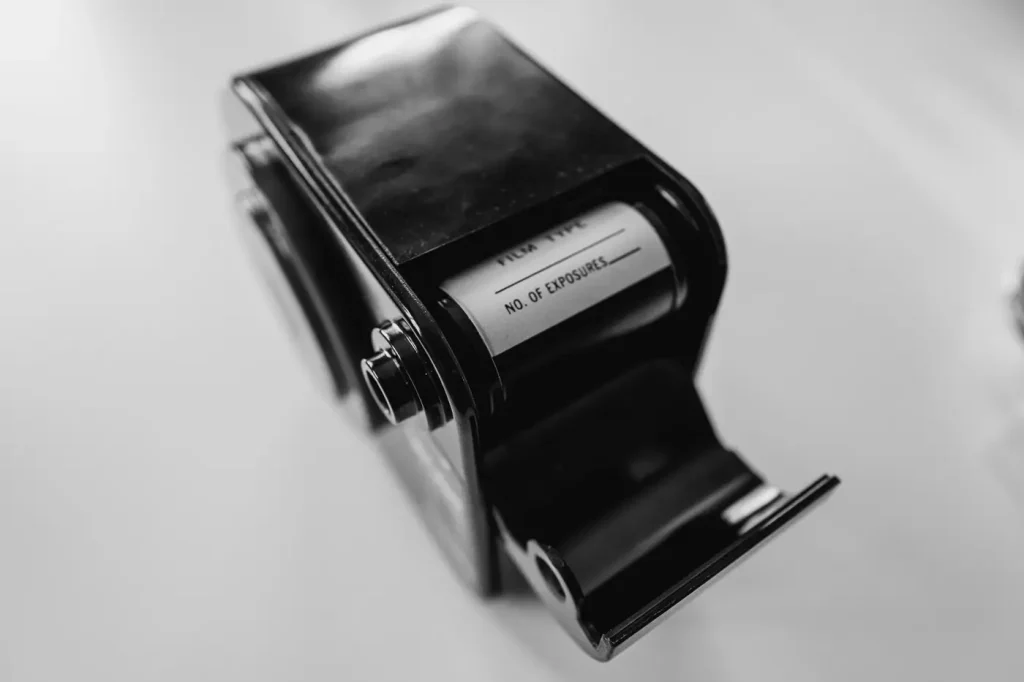
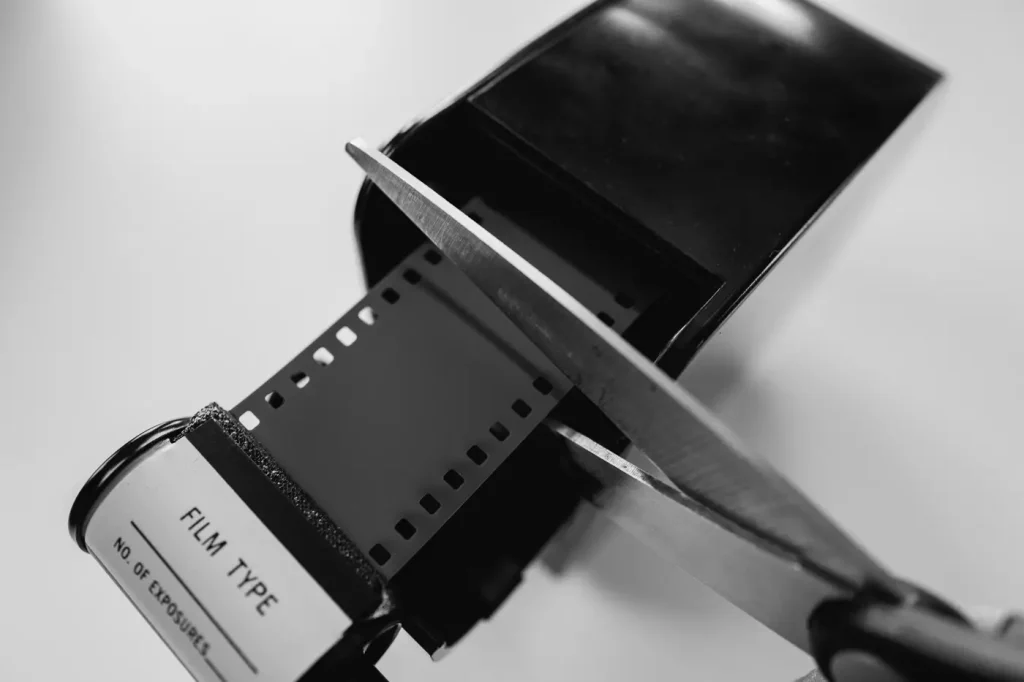
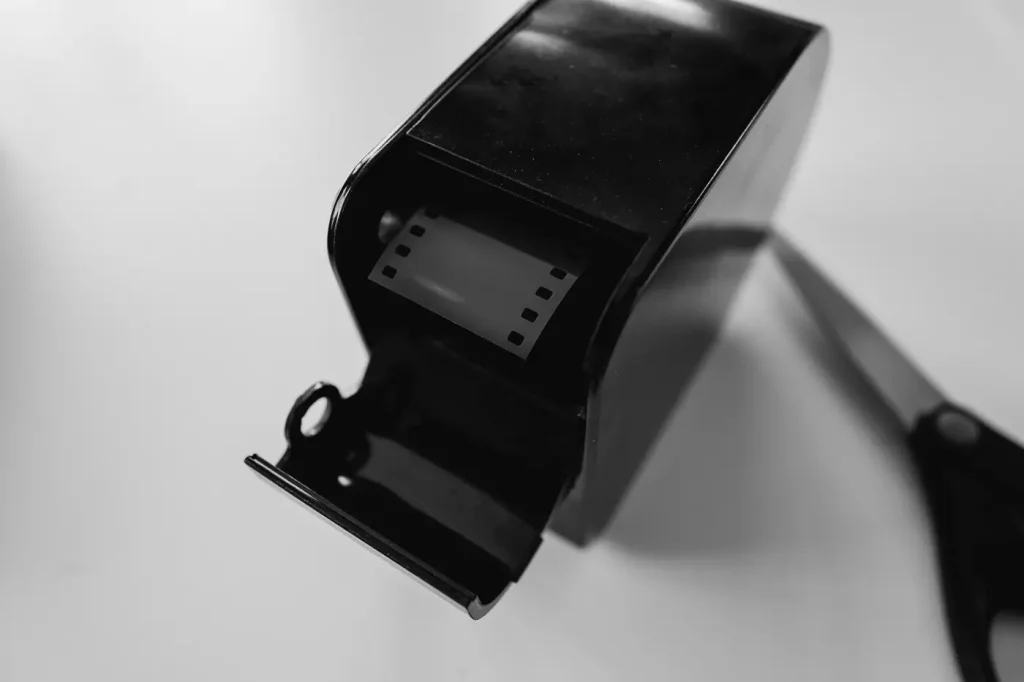
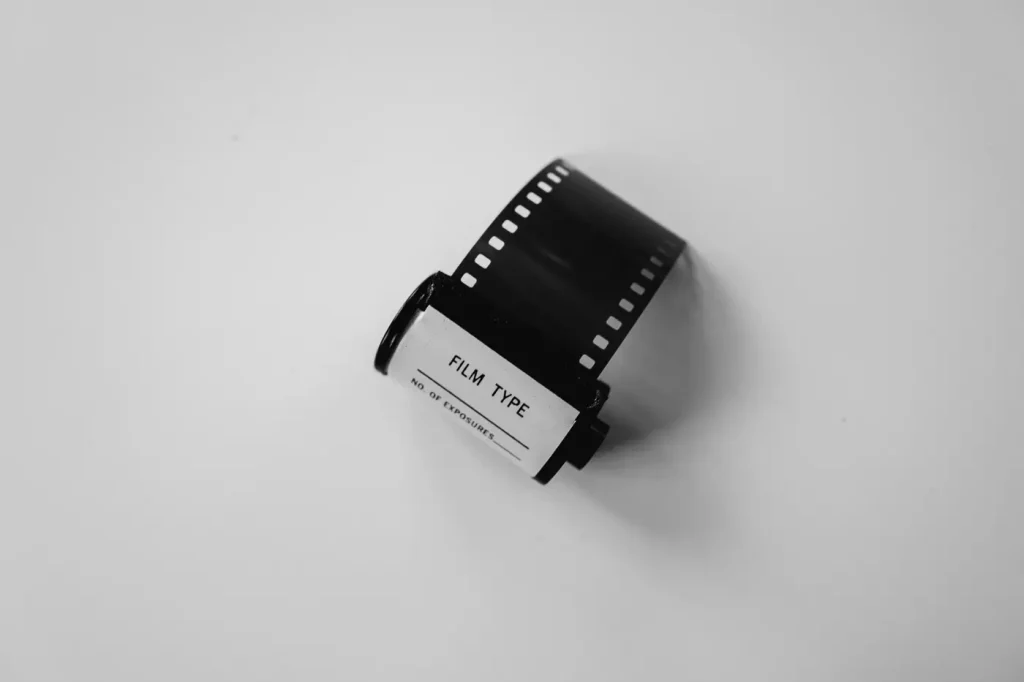
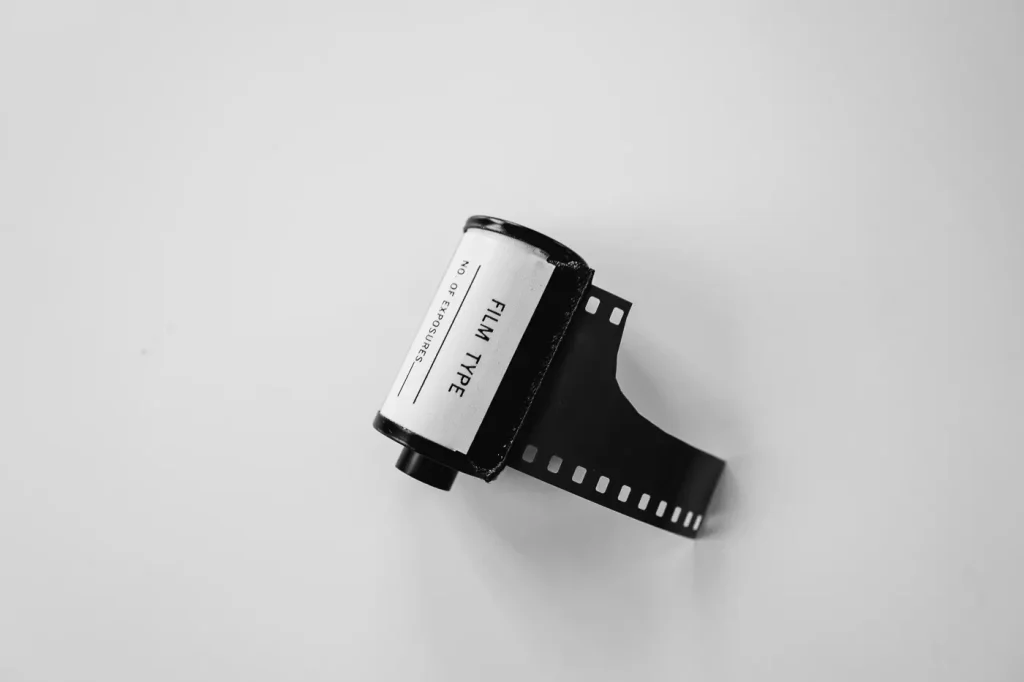

Final thoughts: is bulk loading worth it?
As mentioned above, there is no single right answer for this. For me personally, thus far, it has been well worth it and the benefits have outweighed the potential shortcomings thus far.
Yes, if you love shorter film lengths
I love the process of bulk film loading as a learning experience. The ability of rolling custom film lengths is a huge benefit in my opinion (by the way: I have not looked at economics of 24 exp film in bulk loading, but suspect that it coudl be even more pronounced). Custom film lengths makes experimenting with different developers, development methods, or other 35mm film camera experiments so much easier.
Yes, if you shoot enough to amortize the expenses of the bulk loader equipment and use film that is significantly discounted in bulk
The films I have been buying in bulk (Ultrafine Xtreme 400 and Ilford’s Delta 400 Pro) are significantly discounted (although Ultrafine Xtreme is already very cheap). Economics can be intriguing once you factor in amortization of your bulk loading gear. It is worthwhile to do your own analysis for your favorite film as there are significant differences with regards to potential savings between different film stock as shown in the Table above. All this will of course vary depending on your geography’s pricing. Again, I used US pricing from one of the major online retailers for this analysis (B&H Photo, Dec 2019).
Yes, if you are aware and mindful of the shortcomings, and take precautions
I do think that economical advantages have to be very carefully weighted against the potential shortcomings. These shortcomings may be, if careful, minimal, but we all know that light leaks and other processes ruining our negatives can be extremely frustrating, even for non “mission critical” work. Having said that, I am aware of many photographers who used this technique for years successfully without any issues.
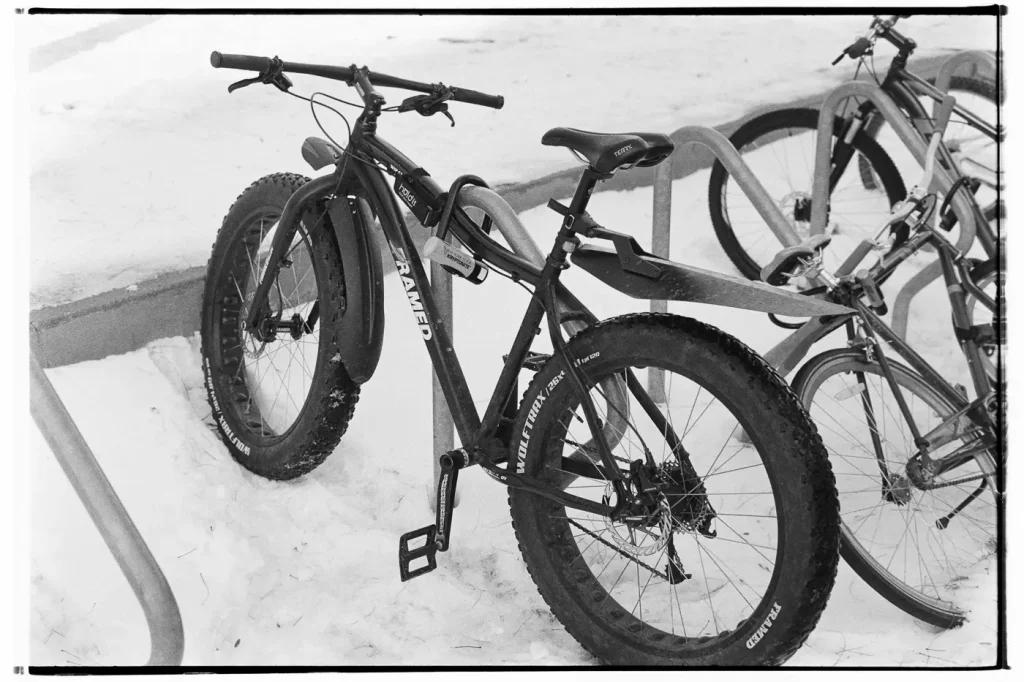
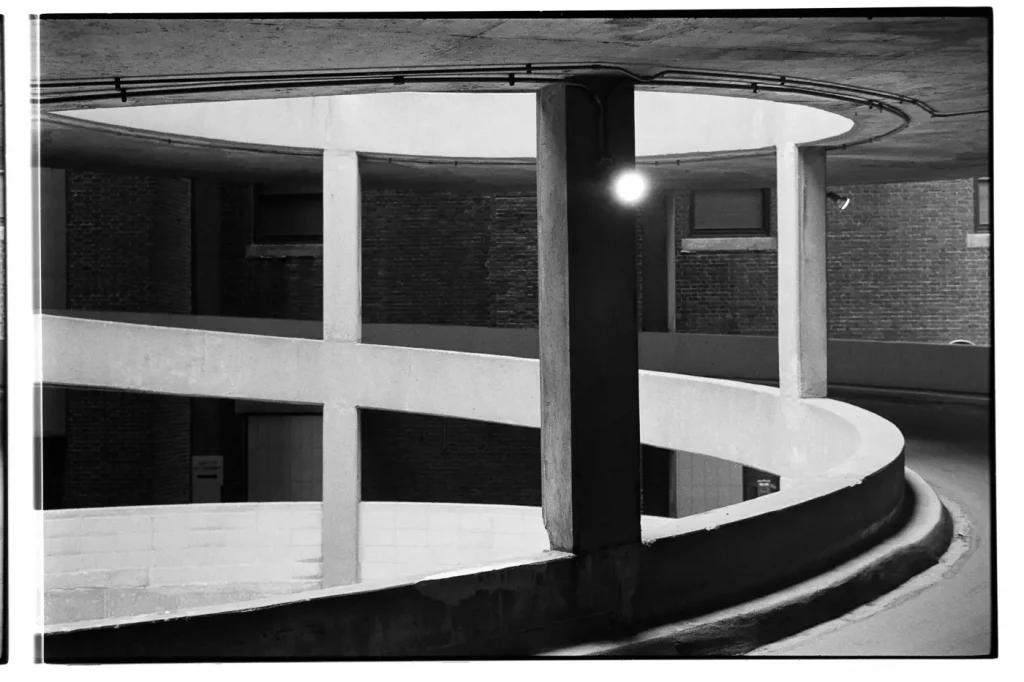
Many of those potential shortcomings can be addressed by using high quality reloadable film cassettes, careful film and cassette handling before, during and after the loading process, including the use of film canisters.
Because of the potential shortcomings above, and until I have probably gathered more confidence/experience, I would not use bulk-loaded film for mission critical work.
Bulk loading 120?
I found some information online that it can be doable, although not necessarily easy: https://emulsive.org/articles/how-to-bulk-load-120-or-220-film-using-65mm-kodak-250d-5207
Did you ever try this?
Tell me your experiences with bulk loading
What are your experiences with bulk loading? Please share them in comments below, also curious to hear any of your tips and tricks!
You can see more of my work on Instagram as well as on my website. I always like to connect with other photographers, so please send me a note via Instagram or website and I’d be happy to respond and connect.
Share this post:
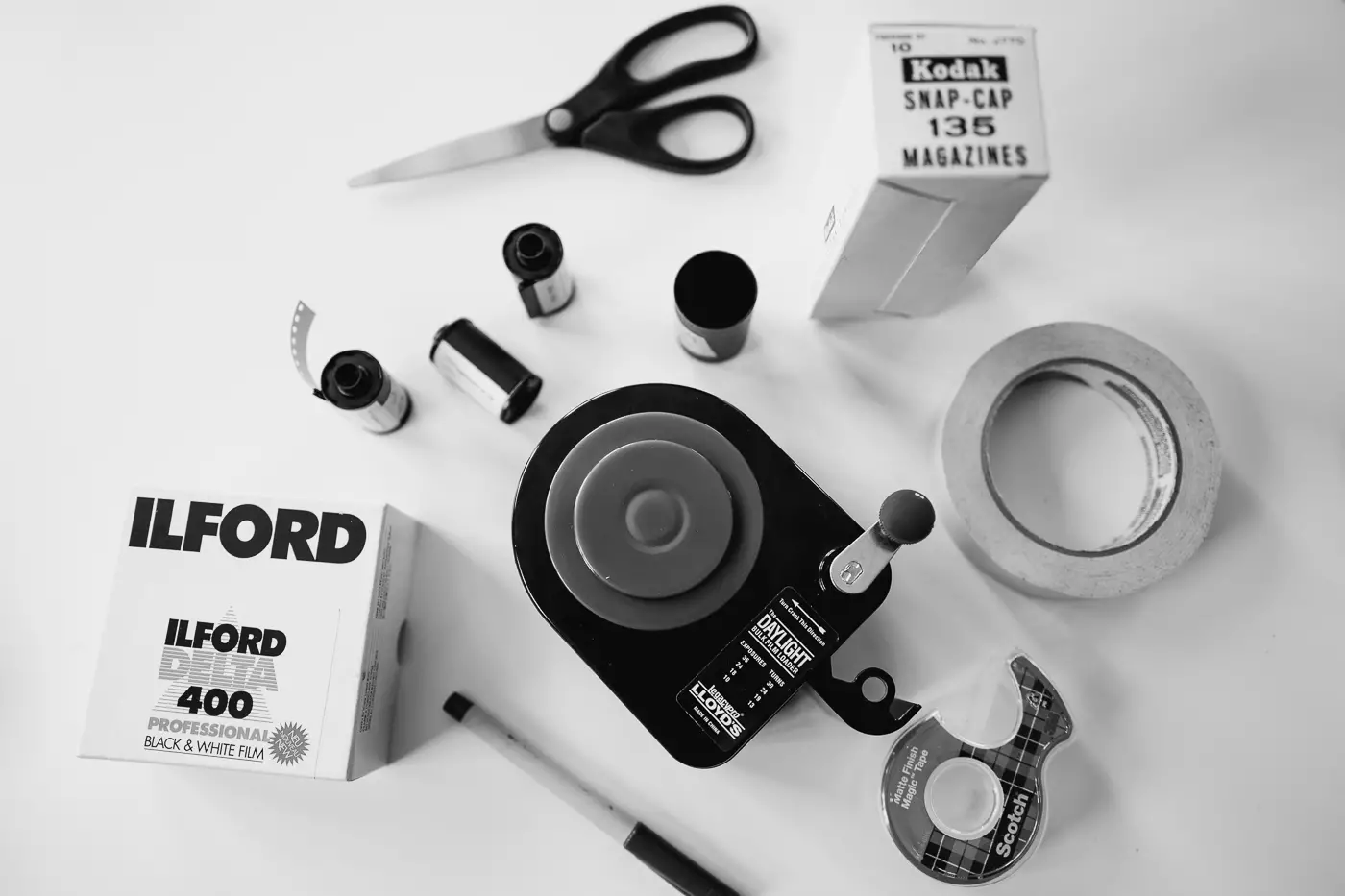
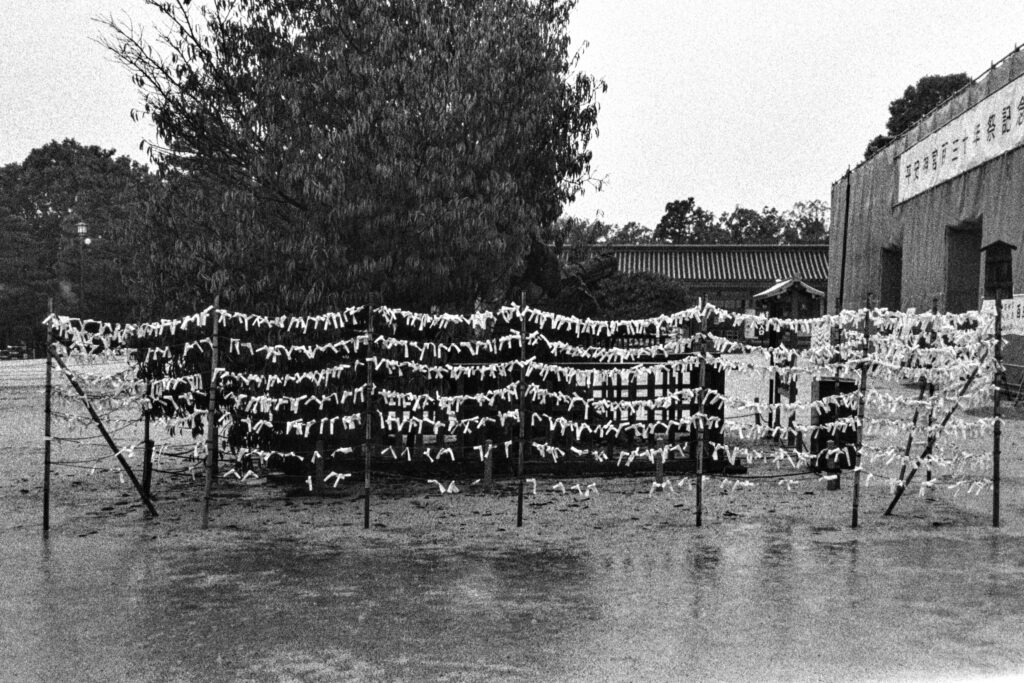
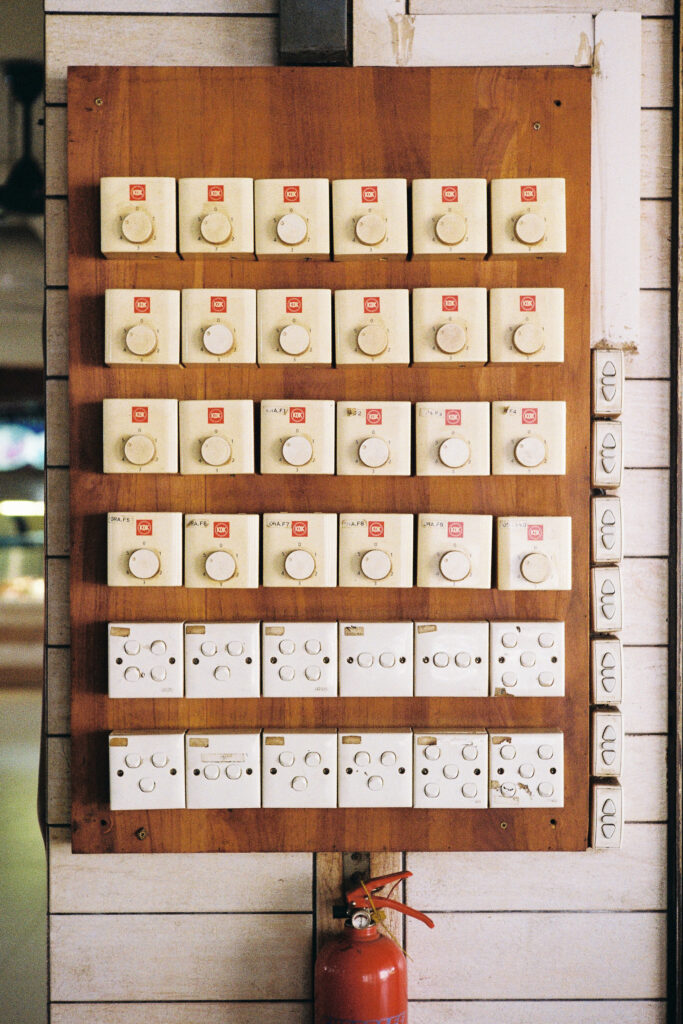
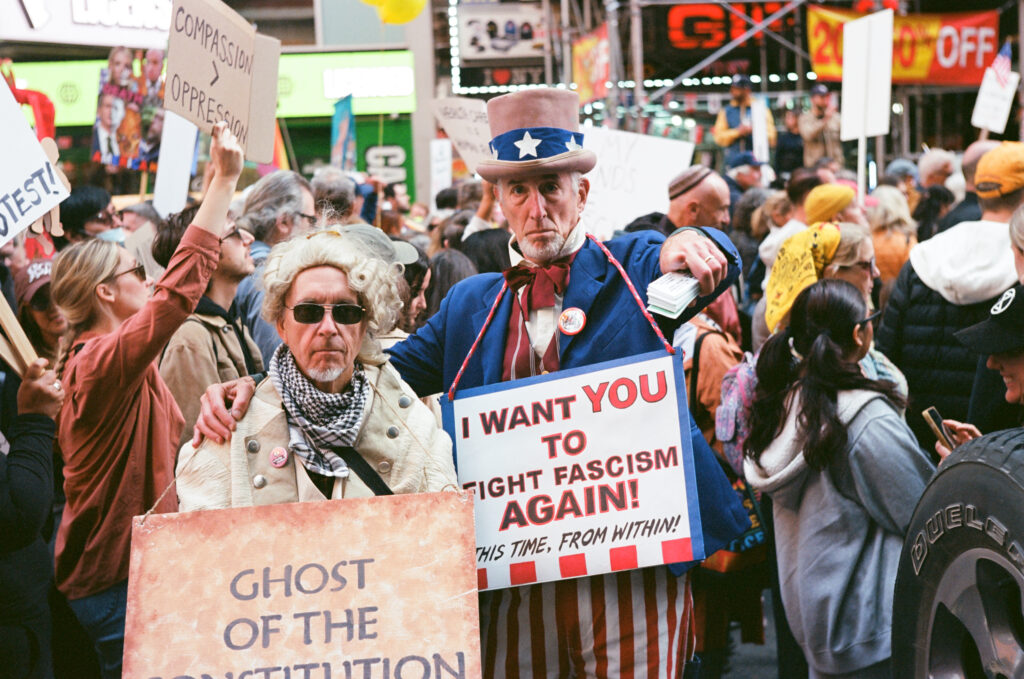
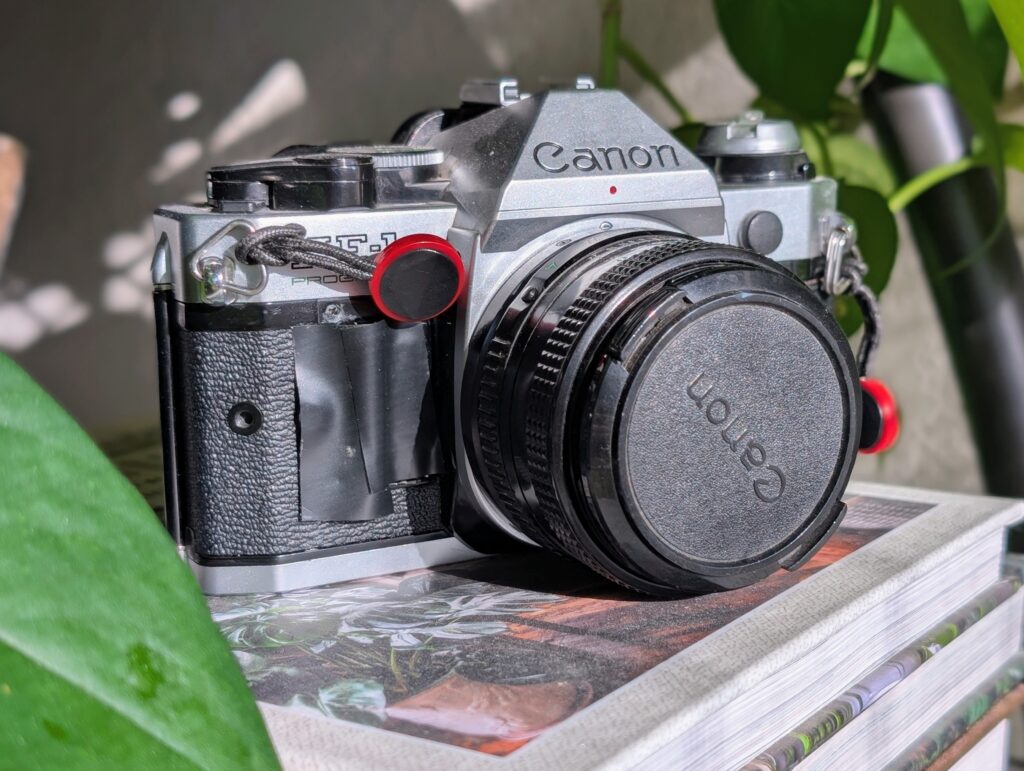




Comments
Sciolist on Worried about the price of film? Some thoughts on bulk loading (and my process) – By Daniel Sigg
Comment posted: 27/12/2019
When I look at the price I was paying for film in the late '70s/early '80s, and apply inflation to bring it up to date, it ends up being about the same price today. in real terms.
Are people trying to shoot it like digital these days? Because, as a hobbyist, I was still only getting through two, maybe three rolls a month. The trick was to try and make every shot count, maximise the keepers, ensure every shot had significance, justified it's existence. It meant I saw everything framed in 36 x 24mm, unconsciously looking for 'the shot'. And In that way, a thousand shots a year was going some.
I remember listening to Guy Webster, who passed away in February, being interviewed and panicking about getting his archive in order. His photography career must have spanned 50 years, made him a multi-millionaire and produced an archive of.... wait for it...50,000 shots. An average of say 2.3 rolls of '36' a month. I was in good company.
Comment posted: 27/12/2019
Eric Norris on Worried about the price of film? Some thoughts on bulk loading (and my process) – By Daniel Sigg
Comment posted: 27/12/2019
I have a collection of cassettes that I’ve bought from the Film Photography Project and on eBay, and I’ve had good luck with them so far. Only a few of my cameras use DX coding, so the lack of it is a plus for me—I don’t need to worry about putting film in the “right” cassette.
I enjoy bulk loading. It brings back memories of shooting photos as a young newspaper reporter, when I’d grab a camera with a short roll to take pictures at a news event. I shot a lot of pictures in those days, ten frames at a time.
Comment posted: 27/12/2019
Patrick Abe on Worried about the price of film? Some thoughts on bulk loading (and my process) – By Daniel Sigg
Comment posted: 27/12/2019
I started bulk film loading to cut the cost of photography in my college days, and continued until a job change brought casual film photography to an end at the "turn of the century." Freestyle Sales company was my source for interesting bulk films from Europe along with the usual Kodak and Ilford 135 films.
I began with Tri-X and Plus-X Pan films, then tested the waters with "mystery European films" such as ORWO and Adox, as well as Ilford before British film arrived on the U.S. market in the 1970's. Ektachrome solor slide film in bulk was another interesting branch to follow, from Ektachrome-X to High Speed Ektachrome in bulk. (This avenue ended when the Kodak Hawaii lab stopped taking odd-length Snap Cap-loads about the 1980's.)
I don't recall buying color negative film, though, since Kodacolor-X and Ektacolor films weren't available in bulk rolls. One of the most interesting bulk film was "H&W Control film," which I later found out was Agfa Copex Pan Rapid. This microfilm, coupled with a liquid "use-it-within-30-minutes" Phenidone developer, could turn your ordinary 35mm camera, mounted on a sturdy tripod, into a "can you read an automobile license plate a mile away?" kind of film.
When I came back to photography in the mid 2000's, digital cameras were making film expiration dates a thing of the past, along with more frames per memory chip than an entire bulk roll. Those "Penny-a-frame" days before DX coding and "flexible ISO ratings" were interesting. It is difficult to return to chemical-based film photography these days when one can "shoot a series of 'frames' from ISO 100-6400 ," color or monochrome," on demand. But given the impetus, I'd dust off the stainless steel developing reels and plastic tanks to reach for D-76 or HC-110 in a heartbeat.;)
Comment posted: 27/12/2019
MK on Worried about the price of film? Some thoughts on bulk loading (and my process) – By Daniel Sigg
Comment posted: 27/12/2019
I've got a couple of suggestions to add.
1) Masking Tape, applied to both sides - I use beige coloured masking tape to attach the film to the cassette spool. I prefer it to transparent "Scotch" tape because it is less likely to tear if applied slightly crooked. Whatever tape you use, it is really important to make sure that it is long enough to attach to one side of the film, wrap around the spool and attach as well to the other side of the film;
2) End of the roll - unless you take steps to load the individual cassettes in the dark, with bulk film it is important to not expose the film right to the end of the roll. When I load my cassettes, I put sufficient film on for the trailer, sufficient film for the frames I'm going to shoot (usually 24) and sufficient film for the leader, and then only shoot the number of frames I planned. That requires more attention to the frame counter;
3) Easy to store - If you tend to like to have film in inventory, the 100 foot rolls take very little space in a fridge or freezer - much less than individual rolls;
4) Systems - I usually have at least two types of film in bulk form - formerly Plus X and T-Max 400 but now it is transitioning to T-Max 100 and T-Max 400 - and it really helps to have consistent systems for labeling the different types. In my case, the plastic holders are labelled "X" (for Plus X and now T-Max 100) and "Y" for (T-Max 400). Colour films get labelled with their ISO.
Have fun - I do.
Comment posted: 27/12/2019
Huss on Worried about the price of film? Some thoughts on bulk loading (and my process) – By Daniel Sigg
Comment posted: 27/12/2019
Great write up; bulk is not for me as I use so many different types of film. But I am impressed by your results with Ultrafine.
Comment posted: 27/12/2019
ºSolinarº on Worried about the price of film? Some thoughts on bulk loading (and my process) – By Daniel Sigg
Comment posted: 27/12/2019
Picky and persnickety thin films like Rollei Superpan 200 (which I absolutely love) is ideally suited to bulk loading. I had nothing but problems with the factory loaded Superpan 200 36 frame cassettes. Literally every time I would try to load it for development it jams-kinks-wrankles-creases-scratches uncontrollably. 20-22 frames from a bulk loader gives me almost no headaches.
I end up freezing the majority of my bulk rolls and found using dedicated Gaff or camera tape ensures that the tape won't disintegrate from the cold, leave the sticky residue or have the end come unstuck while trying to rewind. However, it is a 'thick' tape and sometimes it tears off a bit of the felt light seals from time to time but after 100 rolls bulk loaded I haven't had any light leak issues, and I've been using the screw-top plastic cassettes for 98% of my work. I'd say I've reused some of the cassettes more than 10 times each and so far they've been flawless.
Comment posted: 27/12/2019
Comment posted: 27/12/2019
Comment posted: 27/12/2019
David Cuttler on Worried about the price of film? Some thoughts on bulk loading (and my process) – By Daniel Sigg
Comment posted: 27/12/2019
The Lloyd loader has the same possibility of film scratches as the felt lip cassettes, but worse, because if there is any debris between the felt gate, there is the possibility of scratching the whole 100 ft roll of film.
If you are purchasing factory loaded film, and doing your own development, it's easy to leave an extra inch or more of film sticking out of the cassette to tape the on the new film. But the same caution applies, check the felt lips for anything that can cause scratches.
I pull the sticky part of post-it's through the felt whenever possible to grab dirt.
Comment posted: 27/12/2019
Castelli Daniel on Worried about the price of film? Some thoughts on bulk loading (and my process) – By Daniel Sigg
Comment posted: 27/12/2019
I taught HS photography for 30 years. Bulk loading saved us money; we took the savings and poured them into buying other photo supplies. I would dedicate a planning period one day per week to load up the cassettes for the week. I loaded 12 exp. rolls for basic lessons, and longer rolls for personal projects. The only problems I ever encountered were students dropping cassettes - they can pop open. We used HP -5 for our film stock. Now retired, I still bulk load my film (Delta 400) in short rolls of 18 exp. when we travel, I load 36 exp. rolls. No problems. I always have film at my fingertips. Since the closest camera store is 45 minutes drive from me, this is convenient and a time saver. I get my film from B&ah, and the bulk loader at a tag sale. Other supplies came from Freestyle in LA.
Bulk loading is not for everyone, but people should not discount the practice.
Comment posted: 27/12/2019
jon Campo on Worried about the price of film? Some thoughts on bulk loading (and my process) – By Daniel Sigg
Comment posted: 28/12/2019
Comment posted: 28/12/2019
CharlesMorgan on Worried about the price of film? Some thoughts on bulk loading (and my process) – By Daniel Sigg
Comment posted: 28/12/2019
Comment posted: 28/12/2019
Guest Post: Some thoughts on bulk loading (35mmc.com blog) | Sigg Photography on Worried about the price of film? Some thoughts on bulk loading (and my process) – By Daniel Sigg
Comment posted: 28/12/2019
Zach B on Worried about the price of film? Some thoughts on bulk loading (and my process) – By Daniel Sigg
Comment posted: 29/12/2019
I moved to just shooting only film a few years ago, and I shot 281 rolls in 2019, which it seems to mean I shoot it a bit “more like digital” than many of those who commented.
I have been working on a few documentary projects as well as shooting film when I travel. I currently have 60 rolls of film packed for a month-long trip that I am leaving for today (S.E. Asia).
I used to shoot Tri-X, Fp4 , and Acros; buying individual rolls, but that was getting too expensive. So I moved to bulk loading and Ilford films. Currently I shoot Delta 100, Delta 400, and some Fp4 .
I bulk load like I said to save money, but also to get longer rolls, opting for 40 exposures per roll to maximize space and limit reloading when in the middle of a quick-paced event. This means I am getting about 17 rolls or so per 100’.
The way I shoot is generally 2-4 rolls at an event (sometimes more) and when I travel I average 2 rolls a day.
I develop all my film in my bathroom and then use my D750 and a Nikkor 55mm on extension tubes to scan the film with Nikon’s negative holder and using a flash to illuminate the negative.
I have found that not getting the last shot on a roll to be a little frustrating at times, or in some cases I get half of an exposure.
I started with the plastic reloadable cassettes but didn’t like them due to the poor quality of the felt. Little pieces would flak off and get on my film. Thankfully I have a mentor who has a bulk of old Ilford Hp5 cassettes that can be reloaded and that is what I’ve been using.
I have had a few scratches on my film, but I don’t think really too much more than I had with single-use cassettes.
I have tried to reuse the single-use cassettes, but I don’t like that method, because like you said, I had an issue rewinding the film on one or two occasions.
A little bit of a ramble as I stream-of-conscience this comment. But hopefully someone finds it at least a bit useful.
Comment posted: 29/12/2019
SF on Worried about the price of film? Some thoughts on bulk loading (and my process) – By Daniel Sigg
Comment posted: 31/12/2019
Comment posted: 31/12/2019
Paul D on Worried about the price of film? Some thoughts on bulk loading (and my process) – By Daniel Sigg
Comment posted: 05/05/2020
Comment posted: 05/05/2020
Some Thoughts and Expereinces in Favor of the Price Hikes on Film - Steven Bleistein - 35mmc on Worried about the price of film? Some thoughts on bulk loading (and my process) – By Daniel Sigg
Comment posted: 11/05/2020
Jeremy Lucas on Worried about the price of film? Some thoughts on bulk loading (and my process) – By Daniel Sigg
Comment posted: 26/06/2020
Now if you dare try this yourself, it takes about of getting used to in total darkness, but I use a piece of string with knots on both ends to measure the length. Once you peel I the five feet you fold the film over on itself and can cut it square without your fingers in the way. To load the Casette I have a long enough tab sticking out of the previous color film and I wrap the scotch tape on the existing tab ( before turning out the lights) long enough that when I line up the new film I just fold the scotch tape over and start winding the cassette until all is in. You stop short about a half inch so you can tape a leader on. I usually set the pretapped cassettes on the bathroom counter as this is my darkroom for loading etc.
I tend to do about 4 at a time then reset the next. Batch of cassettes and go again. I guess I do have a bit more cost involved with theleader material, but I don't have to amortize a daylight loader. Also my last frames come out, actually more often than not it's cut off because it was the tape line, in those In stances I count that roll as 38.5 frames.
Ocassionaly a tab gets pulled into the cassette. I take those apart carefully re feed the tab and snap it back together. A little electrical tape takes are of any light leaks potential and works great. Those repaired cassette fit a bit snug in the camera though with the tape. And the electrical tapeworms better if you precut it and dont stretch it.
Best of luck to anyone that tries this. It's a bit of work but fun and like I said you get 5 free rolls out of every 20. Also wheni want a short roll I simply pull some out of a long roll and put it in another cassette as needed. I don't do short rolls that often so this work form.
Comment posted: 26/06/2020
ROGER B on Worried about the price of film? Some thoughts on bulk loading (and my process) – By Daniel Sigg
Comment posted: 04/04/2021
I like the consistency of film stock where all 100ft are manufactured together.
Helps isolate any processing variables that may occur.
I personally have better luck with metal Snap-On canisters, after having plastic ones with screw type ends come off in the field from my fumbling hands.. Suppose I could have secured them with tape or something, but just gave up after 2nd miss-hap.
Currently have 3 bobinquick, currently housing delta 400, panF , and Rollei RPX100. (I may get another holder and re-stock a roll of the delta 100 that ran out recently.)
Testing is being done with variations of Xtol, and also will be with PMK.
Comment posted: 04/04/2021
Film Prices are Skyrocketing – Shoot More Film! | Johnny Martyr on Worried about the price of film? Some thoughts on bulk loading (and my process) – By Daniel Sigg
Comment posted: 10/05/2022
Andy on Worried about the price of film? Some thoughts on bulk loading (and my process) – By Daniel Sigg
Comment posted: 02/05/2023
I know this post is a few years old, but it's still very helpful! It led to me getting 100 feet of black and white film to give it a shot and answered a lot of questions with nuance. It's very much appreciated. I decided against buying a bulk loader (another $50 could buy more film, right?), and used an old busted 35mm camera as a winder and some cannisters that I kept from previously exposed film. It works quite well as long as you don't mind working in the dark.
I had a pro photographer tell me I was wasting film by going with a shorter number of frames, so I was glad to see you thought this was a benefit. I used to work for a newspaper in the late 1990s (pre-digital), and we always shot 12-exposure rolls to turn the film fast. I find it to be a bonus, and it allows me to experiment with various exposure and development settings, especially using 1/2 frame cameras from the 1960s.
Thanks again!
Andy
Comment posted: 02/05/2023